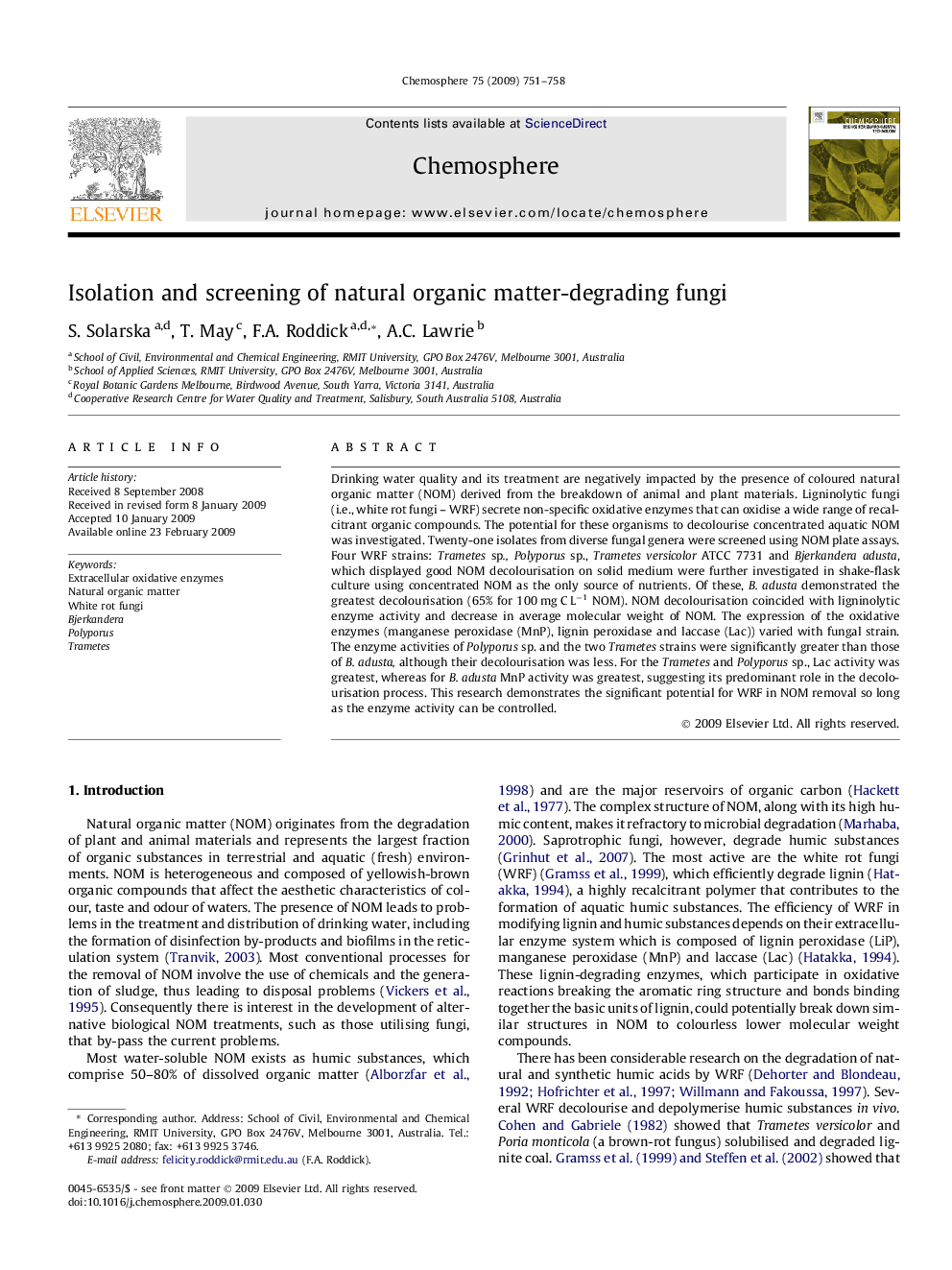| Article ID | Journal | Published Year | Pages | File Type |
|---|---|---|---|---|
| 4413217 | Chemosphere | 2009 | 8 Pages |
Drinking water quality and its treatment are negatively impacted by the presence of coloured natural organic matter (NOM) derived from the breakdown of animal and plant materials. Ligninolytic fungi (i.e., white rot fungi – WRF) secrete non-specific oxidative enzymes that can oxidise a wide range of recalcitrant organic compounds. The potential for these organisms to decolourise concentrated aquatic NOM was investigated. Twenty-one isolates from diverse fungal genera were screened using NOM plate assays. Four WRF strains: Trametes sp., Polyporus sp., Trametes versicolor ATCC 7731 and Bjerkandera adusta, which displayed good NOM decolourisation on solid medium were further investigated in shake-flask culture using concentrated NOM as the only source of nutrients. Of these, B. adusta demonstrated the greatest decolourisation (65% for 100 mg C L−1 NOM). NOM decolourisation coincided with ligninolytic enzyme activity and decrease in average molecular weight of NOM. The expression of the oxidative enzymes (manganese peroxidase (MnP), lignin peroxidase and laccase (Lac)) varied with fungal strain. The enzyme activities of Polyporus sp. and the two Trametes strains were significantly greater than those of B. adusta, although their decolourisation was less. For the Trametes and Polyporus sp., Lac activity was greatest, whereas for B. adusta MnP activity was greatest, suggesting its predominant role in the decolourisation process. This research demonstrates the significant potential for WRF in NOM removal so long as the enzyme activity can be controlled.
